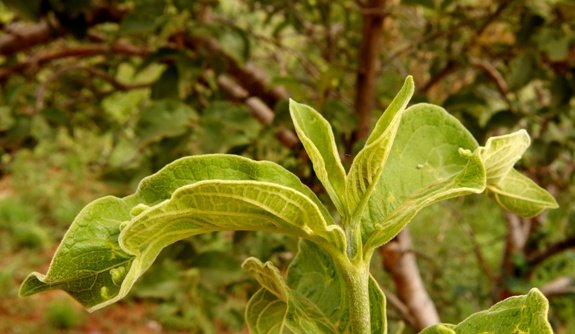Vangueria infausta subsp. infausta stem-tip

Author: Ivan Lätti
Photographer: Ivan Lätti
These stem-tip leaves of Vangueria infausta subsp. infausta present the typical elliptic leaf-shape, often obscured by galls, while some leaves are almost round. The leaves are opposite, growing on hairy stalks of 3 mm to 10 mm long.
The tips taper or are rounded, the leaf bases taper as well. The leaf margins are entire, their surfaces wavy. Leaf texture is thickly furry from a dense covering of hairs on both surfaces, more so on young leaves.
The yellowish green leaf colouring is here enhanced by the covering fur. Six to eight lateral veins curve forward from the leaf midribs to the margins. Conspicuous net-veining is visible, particularly on the lower leaf surfaces. Leaf dimensions are 4 cm to 30 cm by 2,5 cm to 18 cm.
Deforming caused by galls, some clearly stalked, is eye-catching in the photo and common on these trees.
Plant galls are abnormal outgrowths of plant tissues, similar to benign tumours or warts in animals. The cause may be various parasites, including fungi and bacteria, also insects and mites. Galls caused by insects are usually induced by chemicals injected by the larvae or adult insects; sometimes by mechanical damage. Galls usually form at the meristems where cell division takes place, but may also grow on any plant parts like leaves, roots, flowers or fruits. The complexity of plant galls has given rise to the study field known as cecidology, a gall being called a cecidium by botanists.
Note the abrupt decrease in stem thickness to the decussate youngest leaf pair (Coates Palgrave, 2002; Schmidt, et al, 2002; Wikipedia).

